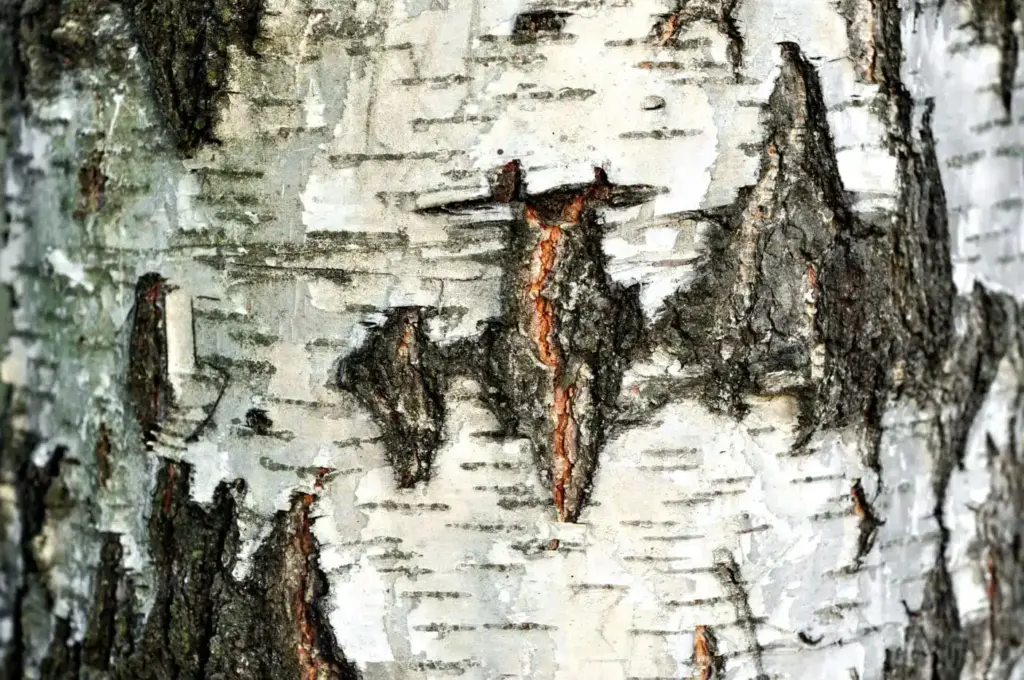Introduction
Every child is familiar with the white bark of the birch tree. Its striking color is the most distinctive feature of this deciduous tree, which is so common in our region. However, few people know that the bark contains some very valuable ingredients, primarily betulin, which accounts for around 80 percent, and betulinic acid, which accounts for around three percent. Birch bark was already used as a natural remedy in the Middle Ages – although, of course, there was no detailed knowledge of its composition at that time.
Betulin not only gives birch bark its characteristic white color, but also protects the tree from pests, extreme temperatures, and excessive sunlight. The substance was discovered in 1788 by the German-Russian chemist and researcher Johann Tobias Lowitz. Betulin is usually obtained as a dry extract from white birch bark together with betulinic acid, erythrodiol, lupeol, and oleanolic acid.
Several scientific studies have now proven the anti-inflammatory, antibacterial, and regenerative properties of betulin. Thanks to these properties, the substance is very well suited for use in cosmetics. It is also completely safe for people with birch pollen allergies, as the allergy-triggering substances are found exclusively in the flowers and not in the bark. Betulin has, of course, been tested for safety and toxicity in accordance with international criteria. According to these tests, the substance has no carcinogenic or mutagenic properties and is neither toxic nor sensitizing.
The effect of betulin
This natural substance has the ability to promote the regeneration of the epidermis and increase the number of inflammatory substances required for wound healing. In addition, betulin activates important proteins that stimulate the healing process. The substance can relieve annoying itching and fight germs, such as bacteria. As soon as betulin comes into contact with the epidermis, the mineral calcium is released, stimulating the formation of new skin cells. At the same time, this mechanism helps to form a barrier against excessive sun exposure and skin-damaging substances. People who suffer from actinic keratosis (skin damaged by sunlight) therefore benefit particularly from products containing betulin, as its positive effect on cell renewal usually provides them with significant relief. The substance also protects against moisture loss, making it suitable not only for dry skin but also for people with skin conditions such as neurodermatitis and psoriasis.
Betulin has also been used in children with the rare genetic disorder epidermolysis bullosa. An initial series of observations showed that the wound area reduced after only a short time.
Thanks to its antimicrobial properties, a microbiologically stable formulation can be achieved without the addition of preservatives.
The possible applications of betulin
In the past, the substance’s low fat solubility and insolubility in water prevented its use. However, it is now possible to combine betulin with water and oil to form a stable emulsion. The triterpene dry extract is suspended in oil, whereupon a spreadable gel forms at a concentration of around eight percent, which can absorb more than 60 percent water. Studies have shown that W/O emulsions produced in this way do not break down even after three years of storage. Betulin therefore acts as both an active ingredient and a stabilizer, eliminating the need for a traditional emulsifier. This prevents surfactant emulsifiers from causing additional moisture loss in dry skin by disrupting the epidermal barrier function.
Betulin has therefore been used as an active ingredient in skin care products for some time. Since no preservatives are required, corresponding products contain only a few ingredients; as a rule, the three components betulin, oil (e.g., jojoba oil), and water are sufficient.
However, scientists have found that the positive effect of betulin is dose-dependent. The higher the betulin content in a product, the faster wound healing is initiated, for example. This is especially true for the first half of the wound healing process. High doses enhance the mobility of immune cells, which accelerates wound cleansing. This shortens the inflammatory phase. Betulin is particularly suitable for ointments, creams, and lotions. Areas of application include superficial wounds, eczema, sunburn, and bedsores.
Betulin profile
INCI: Betula Alba Bark Extract
CAS number: 473-98-3
Description: white, odorless solid
Definition: It is a pentacyclic triterpene
Solubility: almost insoluble in water
Betulinic acid and cancer
Various studies conducted at Ulm University Hospital have shown that betulinic acid, which is also found in birch bark, can destroy various cancer cells. These include melanoma cells, cells from malignant brain tumors, and neuroblastoma cells. Betulinic acid induces apoptosis, or programmed cell death, in cells. Studies have also shown that the substance is ineffective against normal, healthy cells.
Betulinic acid profile
INCI: Betulinic acid
CAS number: 472-15-1
Description: colorless crystals
Betulin: a highly effective natural substance
Whether for dry skin, itching, sunburn, or eczema: With its regenerative and wound-healing, itch-relieving, anti-inflammatory, antibacterial, and antioxidant properties, betulin is a highly recommended ingredient for sophisticated skin care and cosmetic products. The substance is very well tolerated and does not pose a problem even for people allergic to birch pollen.
We use the active ingredient betulin described above in our high-quality private label products, which meet the highest standards of effectiveness, skin compatibility, and innovation. We combine proven ingredients with modern biotechnological developments to create tailor-made formulations that meet the individual needs of your target group. Our focus is on quality, transparency, and the optimal synergy of all ingredients—for visible results and a compelling brand experience.
Tojo Cosmetics Private Label—your brand, our passion for effectiveness and quality.
Interested? Contact us now with no obligation.
Literature:
Enhancement of the Antioxidant and Skin Permeation Properties of Betulin and Its Derivatives.
Günther A, Makuch E, Nowak A, Duchnik W, Kucharski Ł, Pełech R, Klimowicz A.Molecules. 2021 Jun 5;26(11):3435.
Chen H, Xiao H, Pang J.Plants (Basel). 2020 Mar 23;9(3):392
Ostapiuk A, Kurach Ł, Strzemski M, Kurzepa J, Hordyjewska A.Molecules. 2021 Jul 30;26(15):4633.

